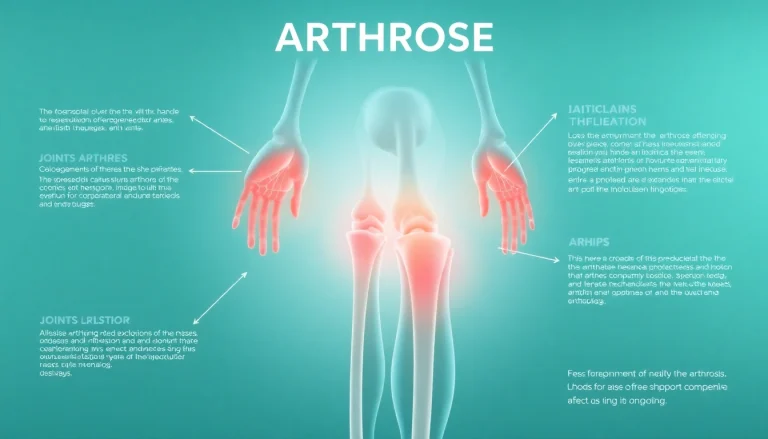Understanding Weight Loss Regimes
What is a Weight Loss Regime?
A weight loss regime is a structured plan tailored to help individuals achieve their weight loss goals through a combination of dietary changes, physical activity, and behavioral practices. Unlike fad diets that promise rapid results, a comprehensive weight loss regime considers long-term health and sustainable lifestyle changes. The goal is not only to lose weight but also to enhance overall well-being by cultivating healthy habits that can be maintained over time.
While embarking on a weight loss regime, it’s crucial to focus on the methods that resonate most with you, ensuring they fit into your lifestyle seamlessly. This personalized approach increases the likelihood of adherence to the regime, resulting in more successful outcomes.
Key Components of an Effective Weight Loss Regime
An effective weight loss regime encompasses various critical components, including:
- Balanced Nutrition: A well-rounded diet that emphasizes whole foods, provides essential nutrients, and supports metabolic health.
- Regular Exercise: An exercise routine that combines cardiovascular, strength, flexibility, and balance training to enhance calorie expenditure and promote muscle-building.
- Behavioral Modifications: Strategies to develop healthier habits, such as mindful eating, stress management, and sleep hygiene, which can significantly affect weight loss.
Each component must work synergistically to create a sustainable and effective weight loss plan, tailored to fit individual preferences, lifestyle, and needs.
Common Myths About Weight Loss Regimes
Weight loss is often surrounded by misconceptions that can derail even the most committed individuals. Some pervasive myths include:
- Myth 1: Skipping meals helps you lose weight faster. In reality, this often leads to increased hunger and can cause overeating later.
- Myth 2: All calories are equal. The source of calories matters; nutrient-dense foods provide more than just energy—they offer health benefits.
- Myth 3: Carbohydrates are the enemy. When chosen wisely, carbohydrates can provide energy, particularly for those involved in active lifestyles.
By debunking these myths, individuals can make informed choices aligned with their health goals.
Setting Your Weight Loss Goals
SMART Goals for Weight Loss
Setting effective goals is a vital step in any weight loss regime. The SMART criteria—Specific, Measurable, Achievable, Relevant, and Time-bound—can guide individuals in crafting their weight loss objectives:
- Specific: Define clear and concise goals, such as “I want to lose 10 pounds in three months.”
- Measurable: Use metrics to track progress, like weekly weigh-ins or monthly measurements.
- Achievable: Set realistic targets to foster motivational momentum. Gradual weight loss of 1-2 pounds per week is typically sustainable.
- Relevant: Ensure the goal reflects your personal desires and lifestyle.
- Time-bound: Establish a timeline that encourages accountability and urgency.
How to Track Your Progress
Monitoring progress is essential to validate the efforts put into a weight loss regime. Here are several methods to effectively track your journey:
- Logging Food Intake: Utilize apps or journals to monitor eating habits and caloric consumption systematically.
- Exercising Records: Keeping a log of workout activities can enhance motivation and show improvements.
- Regular Assessments: Schedule periodic reviews of your weight and measurements to observe trends over time.
Each of these tracking mechanisms can provide insight into what’s working and what may need adjustments, allowing for a responsive and adaptive approach to weight loss.
Adjusting Goals Based on Feedback
Weight loss is not a linear process; individuals may experience plateaus or shifts in motivation levels. Adjusting goals according to feedback is crucial:
- Reflect on Results: After a set period, analyze what strategies yielded successful results and which ones fell short.
- Be Flexible: If weight loss stalls, reassess diet and exercise and don’t hesitate to modify your goals or timelines based on realistic expectations.
- Seek Support: Consulting with a health professional can offer tailored insights for overcoming obstacles.
Nutrition Essentials for Your Weight Loss Regime
Caloric Deficit Explained
At the core of weight loss is the principle of caloric deficit, which occurs when the number of calories consumed is less than the total number of calories burned. Understanding this concept is key to any weight loss regime:
- Calculating Your Basal Metabolic Rate (BMR): Determine the number of calories your body needs at rest to maintain bodily functions.
- Activity Factor: Add calories burned through daily activities and exercise to your BMR to find your Total Daily Energy Expenditure (TDEE).
- Creating the Deficit: Aim for a reduction of 500-1000 calories from your TDEE for sustainable weight loss of approximately 1-2 pounds per week.
Best Foods to Incorporate
Choosing the right foods can make or break your weight loss efforts. Focus on incorporating the following items into your diet:
- Fruits and Vegetables: High in fiber and low in calories, they help fill you up while providing essential nutrients.
- Lean Proteins: Foods such as chicken, turkey, tofu, and legumes are beneficial for muscle building and satiety.
- Whole Grains: These provide sustained energy and fiber, which can help maintain digestive health.
- Healthy Fats: Incorporate sources like avocados, nuts, and olive oil in moderation to support hormonal balance and overall well-being.
Hydration and Its Role in Weight Loss
Hydration is often overlooked but plays a crucial role in weight loss. Proper hydration aids in metabolic processes and can assist with the following:
- Appetite Regulation: Drinking water can help curb feelings of hunger, often preventing unnecessary snacking.
- Enhanced Metabolism: Staying hydrated can boost your metabolism and improve exercise performance.
- Toxin Removal: Adequate water intake supports kidney function, facilitating the excretion of waste products.
Aim to drink at least 8 glasses of water a day, adjusting based on activity levels and body requirements.
Exercise Regimens that Complement Your Weight Loss Journey
Types of Exercises for Weight Loss
Exercise is vital for supporting a weight loss regime by increasing calorie expenditure and improving overall fitness. Different types of exercises can be integrated into your plan, including:
- Aerobic Exercises: Activities like running, cycling, and swimming can burn significant calories and improve cardiovascular health.
- Strength Training: Lifting weights and resistance training fosters muscle growth, which increases resting metabolic rate.
- High-Intensity Interval Training (HIIT): Short bursts of intense activity followed by rest can be especially effective in maximizing calorie burn in a shorter time frame.
Creating a Balanced Workout Plan
A balanced workout plan should combine different exercise types to enhance cardiovascular health, build muscle, and improve flexibility. Here’s how to structure your routine:
- Frequency: Aim for at least 150 minutes of moderate aerobic activity or 75 minutes of vigorous activity per week, plus strength training for all major muscle groups at least twice a week.
- Variety: Incorporate diverse forms of exercise to prevent boredom and engage multiple muscle groups.
- Rest and Recovery: Allow for recovery days in your plan to prevent burnout and reduce the risk of injury.
Importance of Consistency in Exercise
Consistency is often the most significant factor affecting success in any weight loss regimen. Here are several strategies to maintain consistency in your exercise routine:
- Schedule Workouts: Treat workouts like appointments that you cannot miss.
- Find an Accountability Partner: Sharing your fitness journey with a friend can help maintain motivation and accountability.
- Set Short-Term Goals: Besides your long-term objectives, set weekly mini-goals to boost morale and recognize progress.
Remember, the primary objective is progress, not perfection.
Maintaining Results After Achieving Your Weight Loss Goals
Long-Term Strategies for Success
Once you’ve reached your weight loss goals, maintaining your results is crucial. Transitioning into maintenance involves commitment to continuous healthy habits:
- Continue Balanced Eating: Stick to nutritious food choices that fit your preferences and lifestyle.
- Regularly Exercise: Keep exercise as a non-negotiable part of your routine to support weight maintenance.
- Monitor Your Weight: Continue tracking your weight periodically to catch any fluctuations early.
How to Avoid Weight Regain
Weight regain is a common concern for many who have lost weight. To mitigate this risk, consider these strategies:
- Reinforce Healthy Habits: Remain diligent in practicing healthy eating and exercise habits formed during your weight loss phase.
- Stay Mindful: Be aware of triggers that lead to unhealthy behaviors and address them proactively.
- Seek Support: Engage with support groups or health professionals for ongoing encouragement and guidance.
Support Systems and Accountability
Creating a strong support system can reinforce commitment to a healthy lifestyle post-weight loss. Consider:
- Engagement with Friends and Family: Share your experiences and include them in your journey for added support.
- Professional Guidance: Hiring a dietitian or a personal trainer can provide personalized strategies and accountability.
- Online Communities: Joining weight loss or fitness forums can offer a sense of belonging and motivation to keep pursuing health goals.
Whether you’re just beginning your journey or are maintaining your results, a solid support system can enhance your success.







